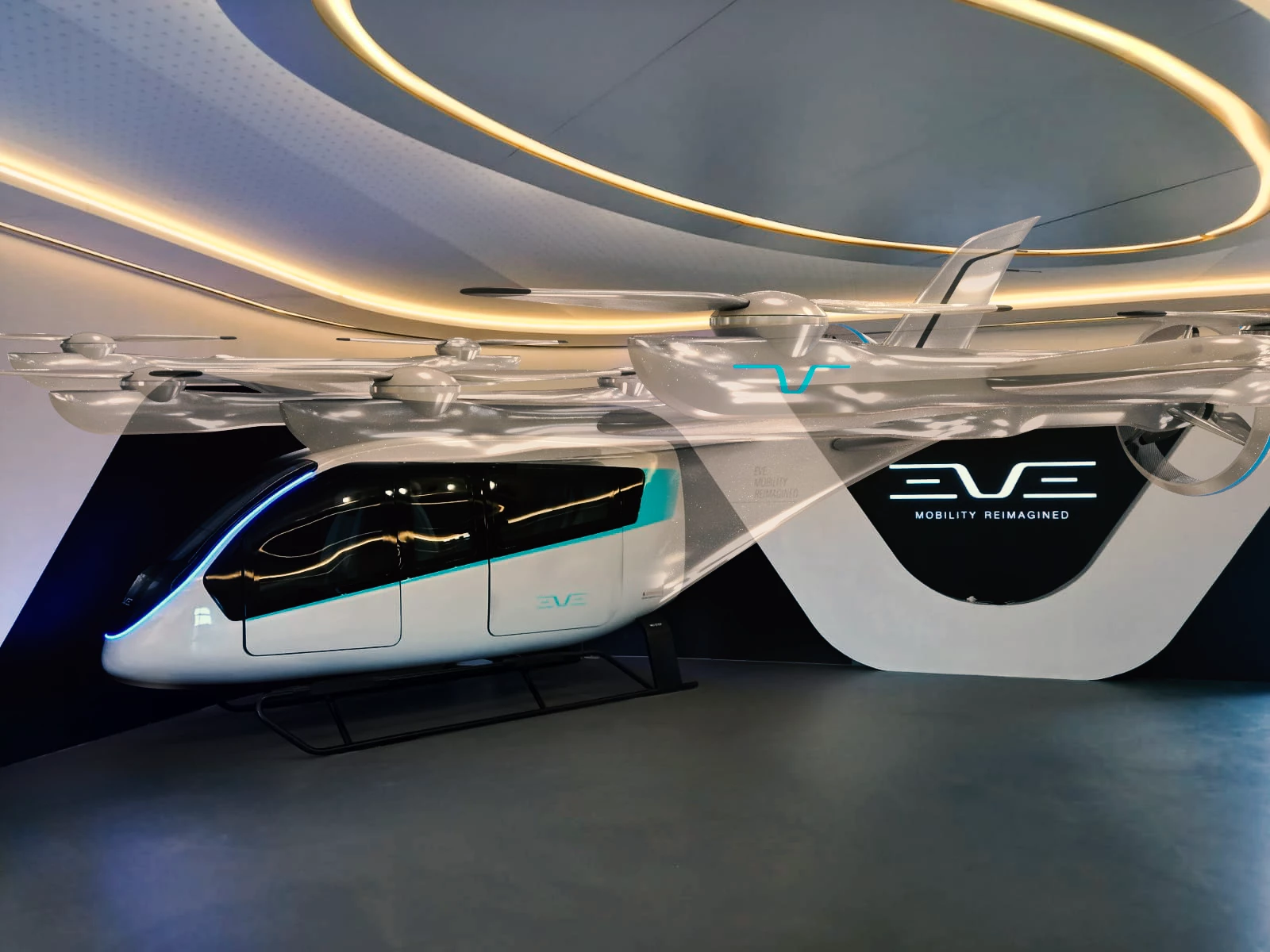Embraer spinoff Eve has changed tack on its eVTOL aircraft design, unveiling a new single-wing lift and cruise design, as well as a refreshingly utilitarian-looking mockup of its passenger cabin, at this week's Farnborough air show outside London.
Where the original Eve eVTOL design ran a two-wing canard setup, with eight vertical lift props to complement two pusher props on the back, it seems the company has decided to go with something a bit more conventional – if you can call any electric VTOL aircraft conventional at this point.
The two pushers and cabin design stay fairly similar, but Eve has consolidated the two wings into one, placing four longitudinal propulsion pods along the wings to hang eight props fore and aft of the wing.
The redesign brings Eve back in line with other non-tilting lift & cruise designs like the Wisk Cora and the AutoFlight Prosperity, which are among the simplest of eVTOL airframe designs. With no tilting propulsion units to vector thrust, they simply use one set of lift fans and another set of forward fans. The advantages here are probably weight, cost and complexity reductions – but the most likely disadvantage will be added drag in forward flight. Eve hasn't put out range or top speed figures yet, so it's unclear how they'll compare.
Air taxi customers are unlikely to care much exactly what propulsion layout these things use, but service operators might well be attracted by lower cost and simplicity if the performance tradeoffs are acceptable.

At the same time, Eve opened up a mockup of its 4-passenger cabin. Two seats face backward behind the pilot's chair, and two rear seats face forward. It's an exceedingly simple-looking cabin, and despite the LED mood lighting, low ceiling and seat belts, there's a definite air of "public transport" about it.
As a member of the public myself, I have to say I like this relatively humble look; eVTOLs must be affordable and fuss-free if they're going to fulfil their promise of revolutionizing and democratizing urban air transport.
Source: Eve Air Mobility







